- Cloud kitchen app development: A step by step guide
- Cloud Kitchen technologies- A sneak peek!
- What should a cloud kitchen app look like?
- There are four steps of working of cloud kitchen:
- The future of cloud kitchen businesses
- Six cloud kitchen business models
- Mistakes to avoid when operating a cloud kitchen business
- Wrapping up
- FAQs
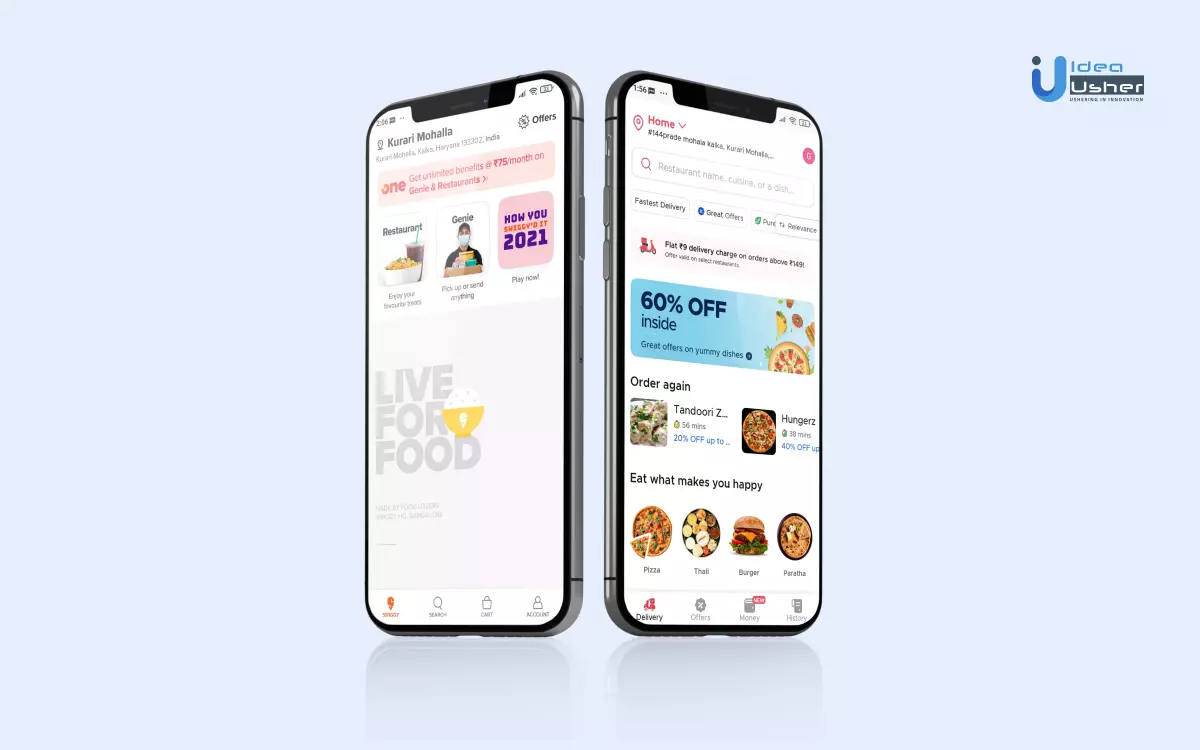
Brick and mortar facilities with warm memories in restaurants are to become history. The pandemic has made cloud kitchens popular. It is ideal to invest in cloud kitchen app development before the market gets too competitive.
- Cloud kitchen app development: A step by step guide
- Cloud Kitchen technologies- A sneak peek!
- What should a cloud kitchen app look like?
- There are four steps of working of cloud kitchen:
- The future of cloud kitchen businesses
- Six cloud kitchen business models
- Mistakes to avoid when operating a cloud kitchen business
- Wrapping up
- FAQs
Cloud kitchen app development: A step by step guide
Here are the key steps you need to follow to develop your own cloud kitchen app.
Step #1: Use an integrated Restaurant Management System (RMS):
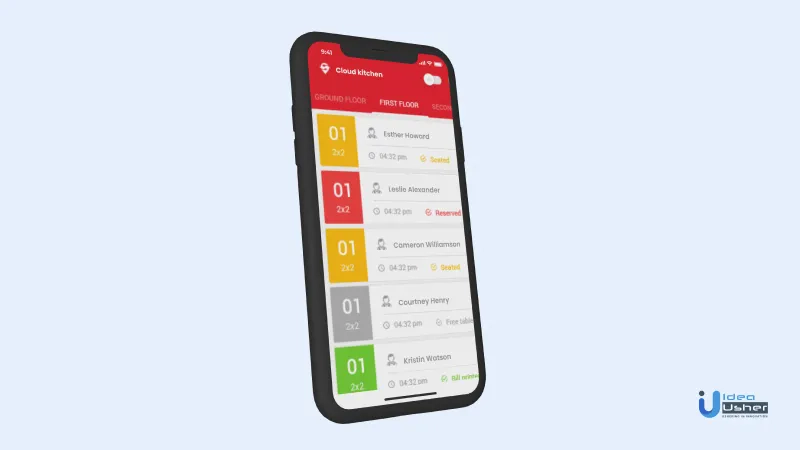
Using an Integrated Restaurant Management System is better than worrying about a lot of individual software. Here’s why.
- RMS allows you to control billing, marketing, managing loyalty programs, etc.
- It helps you to develop your online ordering platform. It means startups don’t have to pay massive commissions to third-party apps.
- Scheduling shifts, employee management, and payroll management get simpler.
- It makes managing reservations uncomplicated.
- Accounting while collaborating with different vendors becomes more efficient.
- Managing orders from various platforms gets easier.
- Various marketing strategies include loyalty programs, app promotion, etc. With a good RMS, coordinating between all these programs becomes a breeze.
The best RMS are Toast POS, 7shifts, TouchBistro, Oracle Hospitality, Clover, CAKE, etc.
Step #2: Plan for inventory management:
Inventory management becomes a breeze by integrating Supply Chain Management (SCM) and Point of Sale (POS). It lets you know about the previous consumption trends to make managing stocks easier. NetSuite, Ginesys, Posibolt, ERPAG are among the best inventory management software.
Step #3: Focus on the frontend:
Display mouth-watering images of your menu on the app screen. Also, keep the font, style, and color palette uniform to build a brand identity and credibility. Customize the website for smartphones, tablets, and PCs. The most widely used menus should be easy to find on the user interface. The best frontend development tools are Chrome DevTools, HTML5 Boilerplate, Sass, Angular JS, etc.
Step #4: Online food ordering:
Build your online ordering portal. Notify your customers in real-time when an order gets dispatched or canceled. Moreover, focus on web design so that the order page looks good and professional across all devices.
Step #5: Flexible payment methods:
The payment gateway should integrate as many payment options as possible for hassle-free and secure payment.
Step #6: Tailored feedback forms:
They help you to get feedback from your customers about your services. Whenever you want to issue app updates or upgrade your services in general, this feedback will prove priceless. Keep these points in mind while building a feedback form.
- No one likes boring or intrusive feedback forms.
- Ask only those questions about food quality, packaging, or app user interface which matter.
- Depending on the answers to previous questions, the app should ask the next question.
- Get digitized answers from your dashboard daily.
- You can offer loyalty points on each feedback to inspire customers to provide feedback.
Step #7: Order analytics:
The app should provide you with the analytics of what your customers prefer and what gives you maximum revenue. This way, you will get to know your customers’ cravings better. Restaurant analytics can help reveal the blind spots you would otherwise never notice. Analytics provides you with a fool-proof overview of what you need to succeed.
Step #8: Advance orders:
Allow your customers to make orders in advance for parties, celebrations, festivals, etc. The best way to celebrate any occasion is by enjoying food. Be prepared to accept any advance orders and be prepared if they are canceled by chance.
Step #9: Minimum order value:
Set custom minimum prices for different locations. This way, the customer will know the least payment they have to pay. It may also be the minimum amount of food they can order you to deliver in one delivery. Minimum order value is a method to ensure you are rewarded adequately for your time.
Step #10: Time-based menu changes:
Your app should display a menu according to the time of the day. It could be breakfast, lunch, or dinner time, and your app should anticipate and display menus accordingly. Also, as seasons change, the customer cravings change. Foods that are trending today might be out of fashion tomorrow. Notice those changes and change the menu for a better customer experience.
Step #11: SSL certificate:
SSL stands for Secure Socket Layer. SSL is a chunk of code that makes sure that online communication is secure. It allows for encrypted connections and identification information. SSL certificates come to play when your website asks for any personal information. Nowadays, search engines are penalizing non-secure websites. With an SSL certificate, a website will show “HTTPS.”
Step #12: POS (Point of Sale) system:
The POS is the heart of the cloud kitchen business model. Here’s how:
- It helps to manage all the distribution channels in an integrated way. A POS allows various value chain levels to work together.
- It is easier to pinpoint which channels bring more profit, which dishes are in demand, and the busiest hours.
- Understand customer demands and offer customized deals accordingly.
- It helps to understand customer engagement trends like frequent buyers, regular buyers, who use your coupons, etc. The data is invaluable when it comes to providing personalized solutions.
- A POS also allows you to make instant changes to your menu and know the status of your stocks.
Examples of POS include Shopify, Square, Lightspeed POS, Vend POS, etc.
Step #13: CRM System:
CRM stands for Customer Relationship Management. Let’s see how cloud kitchen businesses use it.
- It helps to engage customers more and more with your brand.
- Promote and offer an event or a new dish, or anything interesting in your cloud kitchen.
- Cash in on any occasion to celebrate.
- Bring back dormant customers.
- Enhance your loyalty programs.
Some popular CRMs are Apple CRM, Coca-cola CRM, Amazon CRM, Activision CRM, Tesco CRM, etc.
Step #14: Test and launch your cloud kitchen app:
The app is ready for launch, but the last thing you want is an app crash. So, test your app across all platforms. Minor bugs are acceptable, but your app should fulfill the core expectations. Then comes the app launch.
Step #15: Promote your cloud kitchen:
Your delicious courses will not sell themselves. So, keep marketing and promoting your cloud kitchen at the forefront. Here are some tips:
- An excellent mobile app: Since customers will solely rely on online orders, focus on user-friendly mobile kitchen app development.
- Incentive programs: Reward your loyal customers with customized discounts and offers.
- Optimize the mobile app: Use tools like Google Keyword Planner and Google Search Trends to make your app more discoverable on search engines.
- Social media marketing: Utilize social media platforms as a force multiplier. Build your brand identity on social media, which helps to build trust among customers.
- Take help from digital marketing experts: You could rely on digital marketing firms to shoulder your marketing responsibilities.
Cloud Kitchen technologies- A sneak peek!
Cloud kitchens are more tech than restaurants. There are some must-have technologies for cloud kitchen app development. Let us understand them one by one.
Tech #1: POS
POS stands for Point of Sale system. It accepts orders from various channels. A POS system allows you to keep track of the orders you get from multiple platforms. This way, you can visually know which platforms work best for you. You may work with online sales aggregators, but it is always worthwhile to have your mobile app.
Tech #2: KDS

KDS stands for Kitchen Display System. It is a virtual replacement for the traditional menus served in restaurants.
Benefits of KDS:
- No misplaced orders: While it is easy to displace handwritten or printed tickets, KDS can improve accuracy.
- More efficient: KDS allows the service staff to track the exact time to prepare an order. Once an order is placed, it is updated in the KDS, and the delivery time is also mentioned.
- More focus on quality: As the staff does not have to manually pass an order to the kitchen, it frees them. The kitchens can focus more on the cooking and garnishing of the meals.
Tech #3: Courier mobile app
What is a courier delivery app?
It makes the shipping process automatic and records all updates related to the delivery of products. The app also provides an automated and tech-based solution for logistics. Courier apps also include 24×7 customer service with AI-powered chatbots. It keeps track of the movement of fleets and ensures timely delivery to the customers.
Benefits of using a courier delivery app
- AI-driven solutions provide automatic results instead of relying on humans.
- These apps can be integrated with social media platforms and e-wallets.
- They help to forecast the seasons when demands will be high. It lets you prepare in advance.
- For instance, if the weather is terrible, your packaging may get spoiled. In that scenario, the app will notify your customers about probable delays.
- A contactless and straightforward process with real-time access to information.
Tech #4: Inventory management system
It allows you to keep a reliable record of what your restaurant has and what more things you must keep in stock. It helps in supply management. Moreover, there will be minimal wastage.
Tech #5: Geolocation
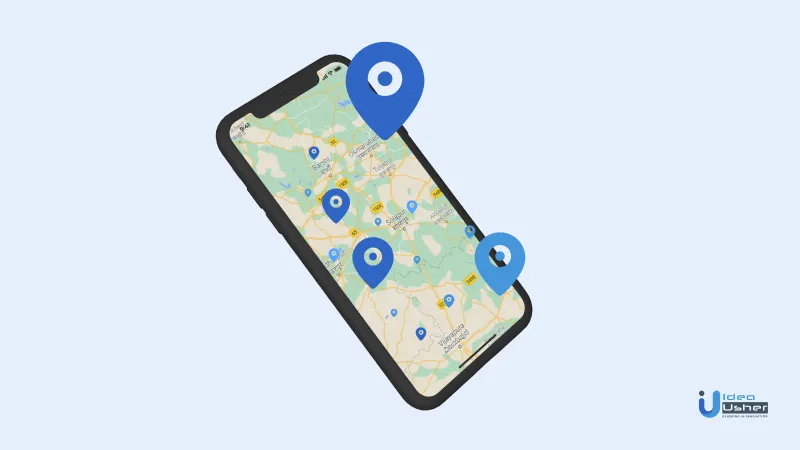
Geolocation makes it easy to track the progress of the delivery at a certain point in time. This way, both you and your customers know what to expect from a specific order.
What should a cloud kitchen app look like?
- When you get the app’s final version, it should reflect the features you had envisioned.
- The app should be easy to scale if you want to include new features in the future.
- Both Android and iOS users should use it effortlessly.
- You can include features like multilingualism, email notifications, wishlist, ratings, and reviews in the app.
- The customer should be able to track the progress of their delivery and the Expected Time of Arrival (ETA).
- The app should pinpoint the exact free agents and find the most efficient routes for quick delivery. The course should be optimized to reach a lot of customers on time.
- There should be a status to update when an order is fulfilled. The driver should close the order when delivery is complete and move on to the next delivery.
- The dashboard should allow you to manage the various delivery partners, orders, cancellations, etc., on one screen.
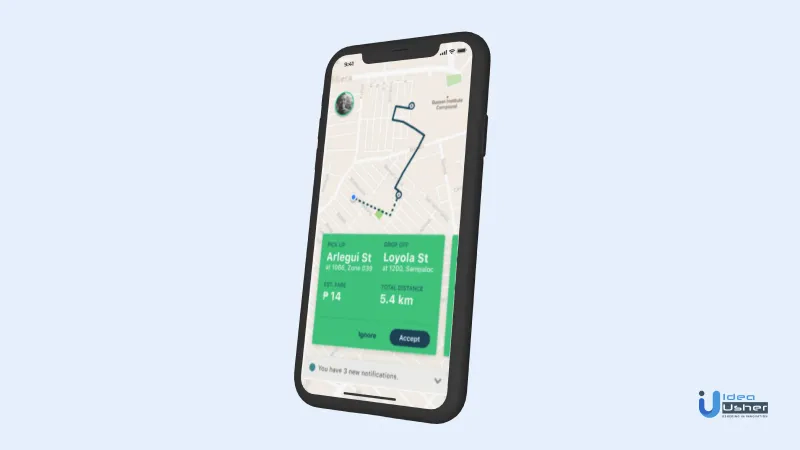
9. The app should let you get insights into your accounting details and sales report. It will allow you to grab the opportunities to grow.
10. There should be scope for coupons and discounts to attract customers.
11. Customers should save the previous order list and reorder those items.
12. The cloud kitchen application should contain filters like vegan, vegetarian, gluten-free, etc.
13. There should be a Favorites section to save their favorite food items. It will smoothen up the ordering process.
14. An integrated payment gateway should make the payment hassle-free.
15. There should be an option for real-time in-app chat that provides the best customer support.
16. The app should tell you about the analytics of the most ordered items, the revenue generated, etc. It lets you get insights into customer behavior and plan for future offerings.
Also, check out how to build a food delivery app.
There are four steps of working of cloud kitchen:
Step #1: Accept orders using mobile apps.
You can always collaborate with pre-existing apps like Grubhub, DoorDash, etc. It is always worthwhile to have your mobile app for your restaurant. It is because these aggregators do not work without commission. Moreover, having your mobile app means you can tailor it and scale it anytime. For this, you need a good app development company.
Step #2: Prepare the food in the following steps:
Decide the menu.
Do thorough market research. Try to know whether your consumers prefer unhealthy delicacies or are they health conscious.
Stock for your inventory.
Decide which ingredients you need for your daily kitchen needs. Stock them up, hire good chefs and invest in kitchen equipment.
Prepare healthy food and follow legal guidelines.
There should be no compromise with your food’s hygiene and nutritional content. Follow the guidelines of your local authorities.
Step #3: Package the food.
Use airtight containers and non-toxic foil papers. Try to use recyclable materials.
Step #4: Deliver the food.
Food delivery should be timely. So, focus on food delivery app development.
The future of cloud kitchen businesses
All is jargon until we take a look at the actual statistics. According to knowledge-sourcing.com, in 2019, the cloud kitchen market was valued at US $32.460 bn. However, by 2026, it is expected to surge to an incredible $73.024 bn with an annual growth rate of 12.28%.
Six cloud kitchen business models
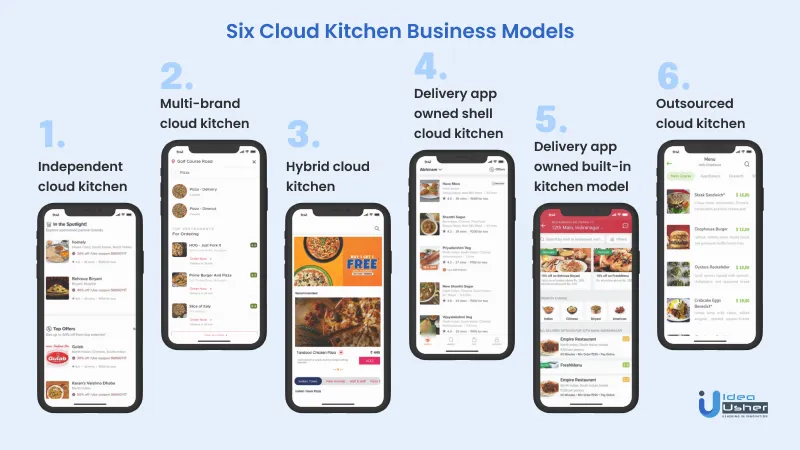
There are many ways in which cloud kitchens can operate. Let us have a look at the most common models:
Model #1: Independent cloud kitchen
- They specialize in a single cuisine.
- There is no seating area or storefront but only the kitchen space.
- These kitchens accept only online orders, and only delivery is complete.
- They may rely on aggregators like DoorDash and their mobile apps.
Model #2: Multi-brand cloud kitchen
- There is only one kitchen that supports multiple brands. Each brand specializes in a different cuisine. It makes them cost-efficient.
- The idea is to cater to the requirements of all people in a 5-6 km radius. They are generally based on those localities which do not have many restaurants.
- There is no seating space or storefront but only the kitchen area.
- They accept only online orders, and only delivery is complete.
- They may rely on aggregators like Uber Eats and their mobile apps.
Model #3: Hybrid cloud kitchen
- It is a takeaway restaurant cum cloud kitchen. It allows customers to come and see for themselves how you prepare the food if they want to.
- There is a kitchen and a storefront with no seating area.
- They support a single kitchen and single brand.
- The menu varies with season and customer demands.
- They mostly rely on aggregators like Grubhub, DoorDash, etc., and their mobile apps.
Model #4: Delivery app owned shell cloud kitchen
- There is only one kitchen that supports multiple brands.
- There is no storefront. Orders come online.
- The kitchen only does the cooking and relies on aggregators for all other things as they don’t have their mobile app.
Model #5: Delivery app owned built-in kitchen model
- There is a kitchen that supports multiple brands.
- There is a storefront where customers can walk in.
- The restaurant looks after the menu, and the delivery app company does all else.
- The delivery app company also shares its knowledge with the restaurants.
Model #6: Outsourced cloud kitchen
- In this model, even the cooking is outsourced, and so is the delivery.
- The chefs only garnish and add the finishing touches to the pre-prepared food.
- Orders come through call centers, third-party sources, and the cloud kitchen’s apps and websites.
- An aggregator delivers the food to the customers.
Mistakes to avoid when operating a cloud kitchen business
Many entrepreneurs invest in cloud kitchens because they are easier and cheaper to set up but fail eventually. Let us have a look at the most common mistakes so that you can avoid them in your own business.
Mistake #1: Lack of standard operating formulae.
How to avoid: Create the procedures that improve the efficiency of your teamwork and make sure everyone follows them.
Mistake #2: Poor inventory management and improper food costing, and food wastage.
How to avoid: Invest in a good POS.
Mistake #3: Food aggregators charge hefty commissions.
How to avoid: Build your app and market it so that you can experiment without having to worry about commissions. Build your brand by hiring a company that knows how to make your business successful.
Wrapping up
Call them cloud kitchen, dark kitchen, shadow kitchen, virtual kitchen, or ghost kitchen; the concept does not change. There is only the kitchen area and no dining space. As per the statistics today, the cloud kitchen app business can bring in cartloads of profit but only if you make the suitable investment at the right time.
If you have a brilliant cloud kitchen app development idea that you have been secretly brainstorming, you can contact us for a free consultation. We can be your constant companions from UX development to testing, launching, and marketing.
FAQs
1. How much can it cost to develop a cloud kitchen?
To set up a cloud kitchen, you do not need to invest in infrastructure, tables, or interior design. It could range from $2K to $4k a month on average. Rent, registration, equipment, human resources, technology, etc., are some of the things you have to keep in mind.
2. Is it profitable to start a cloud kitchen?
The short answer is yes. Above all, the pandemic has brought social distancing norms, which means many people will not leave their homes just to enjoy restaurant delicacies.
Operating a cloud kitchen requires less area and workforce. The key is a technology that allows you to reach more customers than traditional restaurants.
3. How do you pick a cloud kitchen location?
The point here is not getting a location where you can get loads of footfall. You may find a relatively inaccessible place at a cheaper rent. But, the key to finding the site is you should have customers for your food in that area.
If your target customers are twenty-something working adults or college-going students, find a location near the colleges and companies that can work like magic!. Tailor your menu accordingly. Leave the rest to food delivery service apps.








